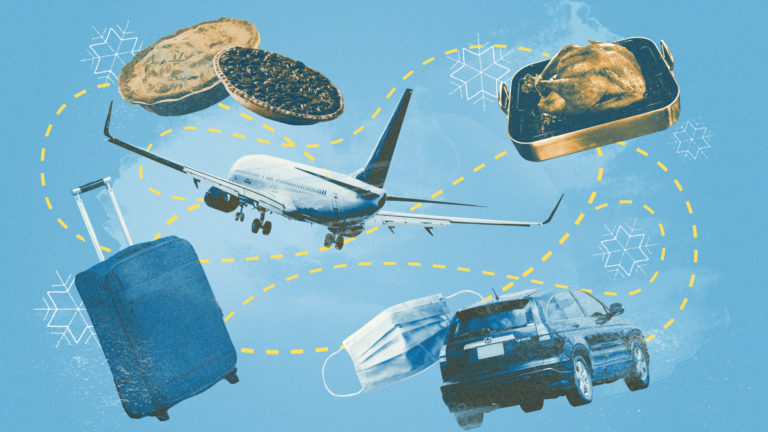2024-09-27 Building Habits
Preamble: What is a “Podcast”?
A podcast is like a radio show that you can listen to whenever you want. Imagine your favorite talk radio program, but instead of having to tune in at a specific time, you can play it on your phone or computer at any moment that suits you.
These shows cover all sorts of topics – from news and politics to gardening tips and crime stories. Just like on radio, there are hosts who talk about these subjects, sometimes alone and sometimes with guests.
The big difference is that podcasts are stored on the internet, not broadcast over the airwaves. This means you can download them to your device and listen even when you’re not connected to the internet. It’s a bit like having a personal library of radio shows that you can carry around with you.
To listen to podcasts, you use a special app on your smartphone or computer. These apps let you search for shows you might like, subscribe to your favorites, and download new episodes automatically.
Many radio stations now offer their shows as podcasts too. So if you ever miss your regular program, you can catch up later by listening to the podcast version.
(ポッドキャストとは何かを理解してもらいたいのですが、これはレッスンと関係ないので、日本語でも説明します。)
ポッドキャストは、好きな時に聴けるラジオ番組のようなものです。特定の時間にチューニングする必要はなく、携帯やコンピューターで、都合の良い時にいつでも再生できます。(私は朝のコーヒーや夕食を作りながらポッドキャストを聞くのが好きです。そして、車に乗っているときは必ずポッドキャストを聴いています。)
これらの番組は、ニュースや政治から園芸のコツや犯罪物語まで、あらゆる話題を扱っています。ラジオと同じように、これらの話題について話すホストがいて、時には一人で、時にはゲストと一緒に話します。
大きな違いは、ポッドキャストが電波ではなく、インターネット上に保存されていることです。つまり、デバイスにダウンロードして、インターネットに接続していない時でも聴くことができます。個人的なラジオ番組ライブラリーを持ち歩いているようなものですね。
ポッドキャストを聴くには、スマートフォンやコンピューターの特別なアプリを使います。これらのアプリでは、好みの番組を検索したり、お気に入りの番組を登録したり、新しいエピソードを自動的にダウンロードしたりできます。
多くの日本のラジオ局が今では自分たちの番組をポッドキャストとしても提供しています。ですので、いつもの番組を聴き逃しても、後でポッドキャスト版を聴いて追いつくことができます。
In the United States, 40% of internet users listen to podcasts monthly. In Japan, 73% of internet users don’t even know what a podcast is.
ちなみに、for the past eight years, Terrie and I have been making a podcast about Japanese culture, mythology and folklore. We have about 30,000 monthly listeners in over 160 countries.
Today’s Lesson: Building Habits
Simple Summary
This podcast talks to BJ Fogg, a well-known professor at Stanford University who studies how people change their habits. He says that to change what we do, we need three things:
- Motivation: We need to want to do it.
- Ability: We need to be able to do it.
- Prompt: We need something to remind us to do it.

Fogg says that making new habits is not just about doing something many times. It’s also about how we feel when we do it. We need to feel good when we do the new action.
He also talks about a mistake people make. Some people think that if you simply give people information, they will change what they do. But Fogg says this is not true. We need to think about motivation, ability, and prompt to help people change.
Full Transcript
Worksheet
もう一つの余談:これはどう見てもホンマニにびっくり仰天の新技術 (Another tangent: This is absolutely mind-blowing 🤯 technology)
Every so often, a new technology comes along that completely blows my mind. Listen to this:
It’s AI. 🤯

I simply gave it the transcript of the podcast, and it created a podcast-like conversation between two fake people discussing the topic. The tone of the conversation, the expression in their voices and the vocabulary is 99% perfect. Overall, it’s about 95% perfect. I’m truly amazed. YOU CAN HEAR THEM TAKE BREATHS!
Try it yourself: Give it ANY text and it’ll turn it into a conversation! It’s too bad it only works in English…
I’m not sure if I can use it in class–It’s nearly perfect, but is the 100% native level grammar and vocabulary too difficult? However, I like the idea of using it as bonus material. I think could be helpful to listen and read the same information from a different perspective.








Do you know the Japanese word” Cinderella fit”?
I have been long fascinated by storage especially kitchen storage. In my kitchen shelf, there are 17 storage cases with a handle so that I can touch them on a high place. In each storage case, things are sorted according to the purpose of the use like bento, zokin, bottles, kitchen detergent, New year’s day goods, Christmas goods etc. In the pantry, there are eleven mujirushi storage cases to put foods, or seasonings. The bad thing about my habit is that the length and the depth of each storage has to be just fit to the length and depth of the shelf. For example, for the 1 meter shelf, I buy 5 of 20 cm storage cases. In the world of organize and store, we call this situation ” Cinderella fit” Therefore,when I go shopping to Mujirushi, Seria, or Daiso, I never fail to bring a measure.
Thank you for sharing your interesting storage system! I can see you’re very skilled at kitchen organization. Let’s use your storage habits as an example to understand the Fogg Behavior Model, and then apply it to develop a new habit for English learning.
First, let’s analyze your storage habit using FBM:
– Motivation: You’re fascinated by storage (strong motivation!)
– Ability: You’ve made it easy by knowing exact measurements and store locations
– Prompt: Shopping trips to Mujirushi, Seria, or Daiso trigger your organizing behavior
– Success: Your “Cinderella fit” system gives you satisfaction
Now, could you think about applying these same principles to develop a new habit for English learning? Like your storage system, we want to:
1. Choose something you’re motivated to do
2. Make it very easy (Start tiny! Please read my reply to Kubota-san.)
3. Link it to a specific prompt (like how shopping trips prompt your organizing)
Would you like to try creating a new plan focusing on a tiny English learning habit? For example, is there something you do every day (like checking your storage) that could prompt you to practice English?
Target : I want to communicate in English more fluently.
Habit to achieve target : Make as much time as possible to expose myself to English.
1. Increase Motivation:
Think about the significance to become fluent in English like supporting foreign refugees, conveying the significance of learning English to Japanese kids, and so forth.
2. Increase Ability:
Prepare various kinds of materials such as movie and drama DVDs, books, audio books, news articles, radio programs.
3. Prompt:
a. Imagine myself helping foreigners with English
b. Always look for new materials by making the most of my extremely strong curiosity(so called Yajiuma-Konjou).
4. Emotion:
Allow myself to escape to my favorites contents such as sit-com Murphy Brown and Cheers, movies Apollo 13, October Sky, Shawshank Redemption and so forth, no matter how many times I have watched.
Interesting! I’ve never heard of 野次馬根性. Is it a positive or negative trait? I looked it up and found this:
野次馬根性 doesn’t exactly mean “a sense of curiosity.” 野次馬 originally referred to people who would gather to watch fires, accidents, or other spectacles in Edo period Japan. Its meaning seems more close to a rubbernecking (what a great word!) or busybody mentality – the tendency to gawk at accidents or drama, often with a somewhat negative connotation.
About your plan:
The podcast we listened to stressed the importance of specificity and simplicity when defining new habits–exactly what are you going to do exactly when? Your goals are broad and you mention multiple activities.
The biggest problem is your plan doesn’t follow Fogg’s central principle of making behaviors VERY, VERY, TINY. I think you’re focusing too much on motivation when FBM emphasizes that making behaviors tiny is more important than motivation. Like they mentioned in the podcast, simply knowing or telling yourself what you need/want to do isn’t enough.
In the beginning, your target behavior should be an extremely specific, tiny action. Something like:
“After I pour my morning coffee, I will play ONE minute of English audio.”
“After I open my phone’s home screen, I will read ONE English headline.”
“After I sit down at my desk, I will say ONE English sentence about what I see.”
In terms of ability (i.e. how easily you can do the task), you’re planning to prepare lots of materials. Fogg says that causes “friction.” Instead, he suggests making the behavior so small that it’s almost impossible to fail. For example, start with one-minute actions, use readily available materials (such as your phone) and remove the time required to prepare.
The prompt should be a precise and already existing anchor. In other words, you should link the new habit to a habit you already do regularly, such as eat breakfast or sit down at your desk.
“After I [exact existing action], I will [tiny new action].” Fogg defines a “tiny action” as one that takes 30 seconds or less to begin with.
After you develop the habit and it becomes something you do automatically without thinking (it should take about 5-7 days), you can do it for a longer time or make the task more difficult. He says your success at establishing the new habit will drive your motivation, instead of the other way around. And he stresses the importance of celebrating tiny wins. (I’m bad at this.)
So I think your original plan risks overwhelming yourself with too many options and with actions that are too big to ensure consistent success. Fogg’s model works best when starting with behaviors so tiny they seem almost trivial.
Analyzing your plan also helped me! I had to do a bit of research to make sure I’m giving you correct advice, which I’ll also use on myself and with my jr. high students who I want to help develop the habit of using flashcards to learn vocabulary.
Bad or Not good habit
I tend to act too sooner than necessary as a precaution = Use time inefficiently
1-a. Decrease motivation
Think myself having been worrying too much
1-b. Increase motivation for alternatives
Think I can have more time to begin some new routine, hobbies, or activities.
2. Ability
Boldness ???
3. Removing prompts that trigger the bad habit
Erase the memories of being late and try to think “So What!!”
4. Emotions
Remove the anxiety
e.g.
a. Try to think the persons concerned don’t care as much as I do.
b. Think it’s just one train and does not necessarily mean ruining whole travel plan.
Sorry to take so long to reply.
Do you only get stressed out when you travel? (I do, especially when airports and airplanes are involved.)
Has changing your way of thinking worked yet? I’ve been thinking about how I can apply the Fogg Behavior Model to how I teach and how I give assignments to students, and also to how I study Japanese.